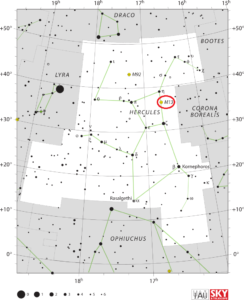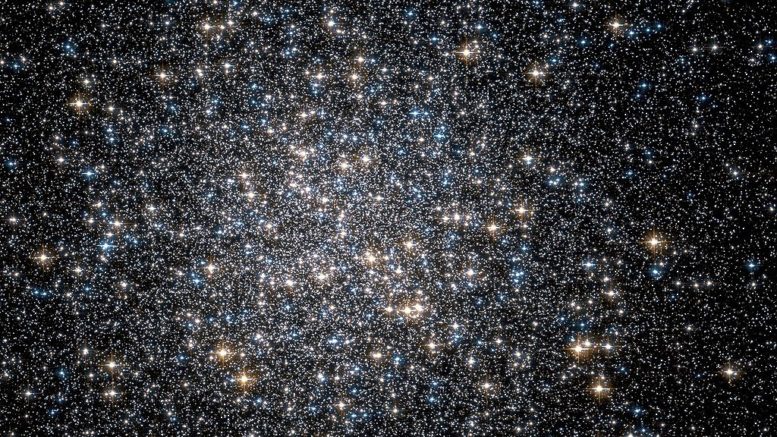Messier 13 is a wonderful globular cluster to view during the summer months. Famously, Messier 13, the Hercules Globular Cluster was the target of the Arecibo message, sent in 1974, which contained information about the human race, Earth’s location and other data. Sent from a radio telescope in the direction of M13 as a way of potentially contacting extraterrestrial civilizations, it turns out the message will never reach its target as in 25,000 years, M25 will be in a different position.
M13 is a 11.65 billion year old formation of stars, which makes it one of the most impressive globular clusters in the northern hemisphere. Containing over 300,000 stars packed into a 145 light year sphere, the center of this glorious object is 500 times more concentrated than its outer perimeters.
| Description | |
| Visible From Pacific Northwest | May to September |
| Best Time To Observe | July |
| Minimum Size Of Viewing Device | Small Telescope |
| Object Type | Globular Cluster |
| Designations | Hercules Globular Cluster, Great Globular Cluster in Hercules, Messier 13, M13, NGC 6205, C 1639+365, GCl 45, MWSC 2445, 2MASX J16414163+3627407 |
| Right Ascension | 16h 41m 41.24s |
| Declination | +36°27’35.5” |
| Constellation | Hercules |
| Number Of Stars | 300,000 |
| Apparent magnitude | +5.8 |
| Apparent dimensions | 20′ |
| Object Radius | 84 light years |
| Distance From Earth | 22,200 light years |
History
M13 was originally discovered by Edmond Halley in 1714. In his notes, he wrote of the cluster: “This is but a little Patch, but it shews it self to the naked Eye, when the Sky is serene and the Moon absent.”
On June 1st, 1764, Charles Messier officially catalogued the star cluster as item 13.
Locating M13 In The Sky
The Messier 13 cluster is located near NGC 6207, a 12th magnitude galaxy seen edge-on. The galaxy can be seen 28 arc minutes northeast of M13. Another galaxy, IC 4617, lies between the two, to the north-northeast of M13’s center.

Viewing M13
To the naked eye, the Hercules Cluster appears as a fuzzy star. Binoculars will reveal a comet-like hazy patch with a clear centre, while 4 to 6-inch telescopes will begin to resolve the stars in the cluster. Instruments with larger apertures will resolve stars across the entire cluster.
Photographing M13
Photographing M13, the Great Hercules Cluster can be photographed with a larger telescope, such as an 8 inch aperture scope, with both a DSLR and CCD cameras. There are a plethora of blogs and guides for astrophotographers who are looking to photo M13 for themselves. For those looking for DSLR options, the longer time spent on total exposure with a better camera, the better the image will look. It is great that photographing M13 can be done with a stock DSLR if the guidance is good and is able to provide an opportunity for all photographers to get involved, which can be best seen with the galactic-hunter attempts.
Once the astrophotographer has finished photographing M13, as with any globular cluster, it is crucial to revisit the object crispness, which will greatly improve the final image!
Sources And Further Reading
Descriptions of all of Messier Objects can be found here.
https://www.nasa.gov/feature/goddard/2017/messier-13-the-hercules-cluster
https://www.galactic-hunter.com/post/m13-the-great-globular-cluster-in-hercules
https://www.space.com/12021-hercules-star-cluster-night-sky-m13-messier.html

Leave a comment